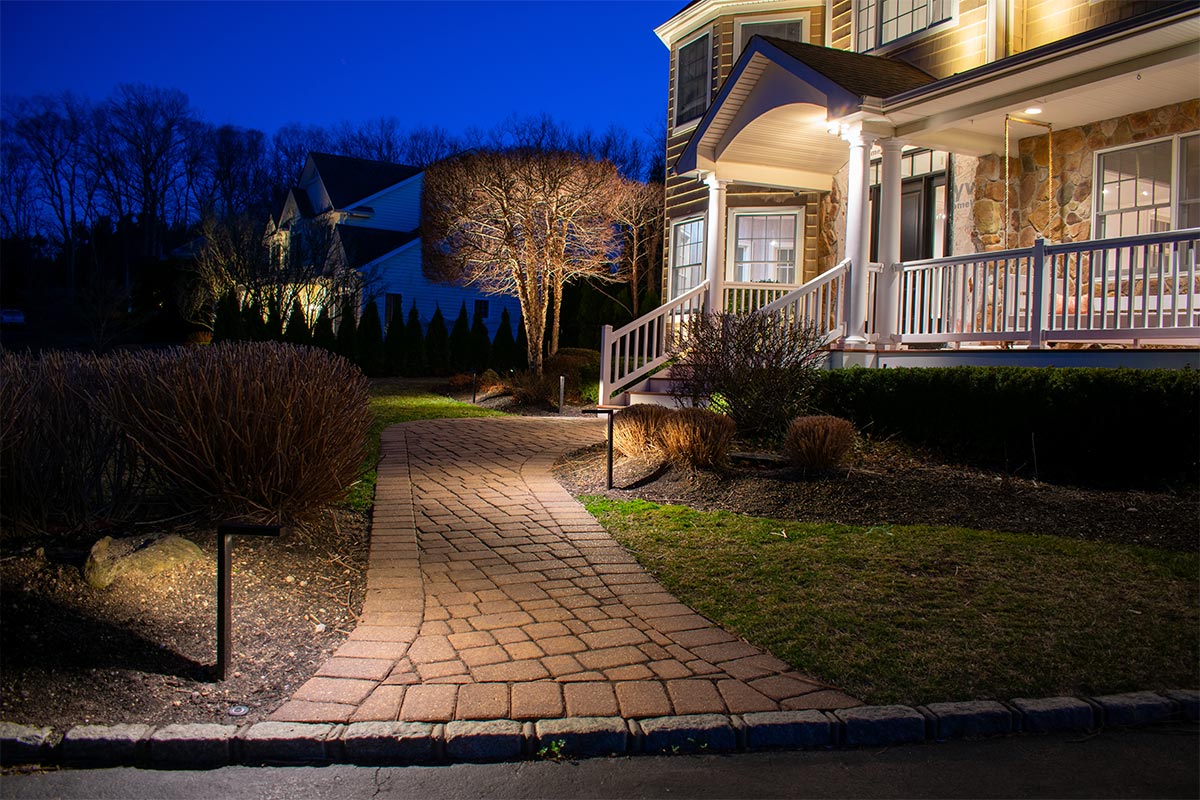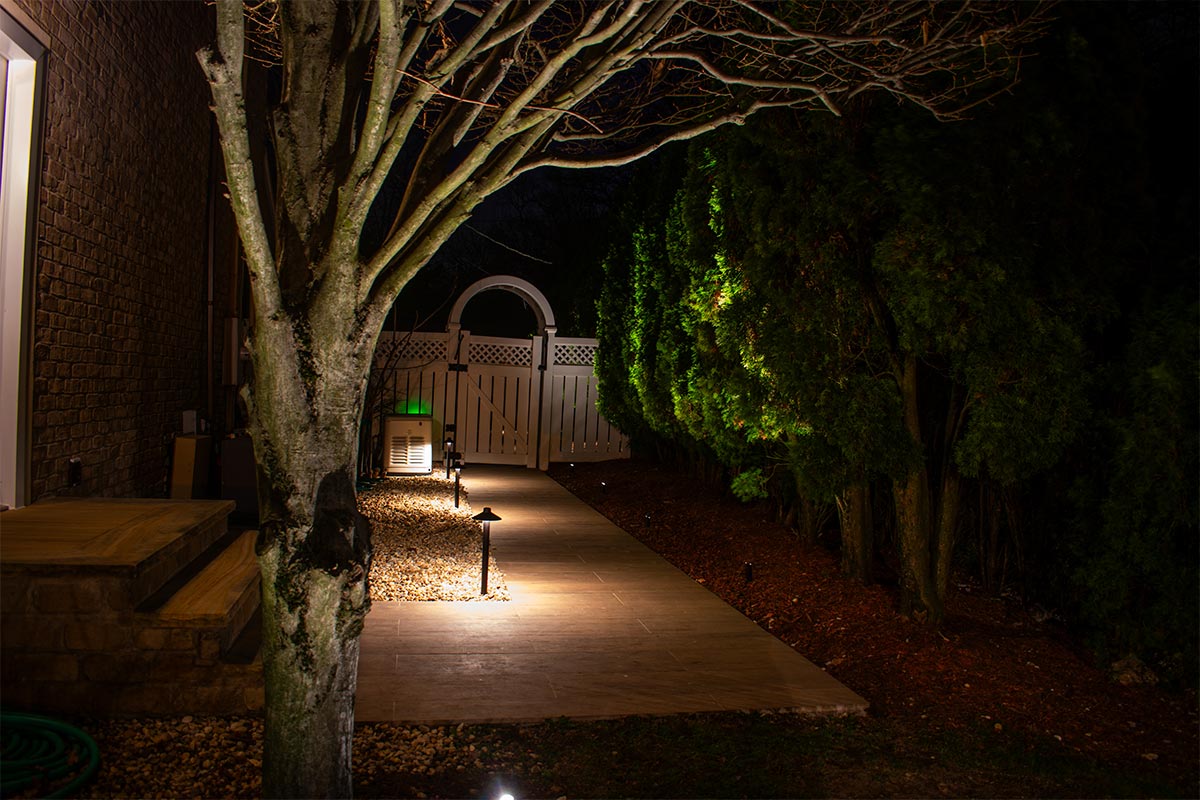Ever come home as dusk settles and wish your yard felt a little more magical? Like the welcoming embrace of a home that’s gently illuminated after a long day? That’s the feeling beautiful outdoor lighting can create. And increasingly, people are discovering the simple brilliance of low voltage outside lights to make it happen.
Think about it: soft washes of light highlighting the curves of your garden path, a warm glow spilling from your deck as you unwind, or maybe just the reassuring gleam that makes your home feel safe and secure. It’s not about turning your yard into a stadium with lights that blind, it’s about adding those subtle touches that make your outdoor space feel like it’s been upgraded. But what exactly are your options, and why choose low voltage? Let’s explore the world of low voltage outdoor lighting to get a better understanding.
Understanding the Basics of “Low Voltage”
Don’t let the technical term “low voltage” scare you. Basically, low voltage systems use a much lower level of electricity (typically 12 or 24 volts) compared to your regular household outlets (120 volts). This reduction in voltage is achieved through a transformer, which handles stepping down the power from your home’s electrical system. The cool part? This lower voltage offers a bunch of fantastic benefits that homeowners love.

Your Yard, Your Style: A World of Lighting Options
One of the great things about low voltage lighting is the sheer variety of lighting styles you can play with. It’s like having an artist’s palette for your landscape where you’re sure to find the perfect fit for your needs and aesthetic:
- Path Lights: These are the workhorses of landscape lighting and your trusted companions for providing safe and attractive illumination along walkways, driveways, and garden paths. They’re not just practical for safety, they add a lovely rhythm to your landscape. You’ll find designs that range from classic lanterns to sleek, modern styles.
- Spotlights: Got a gorgeous tree you adore? A unique architectural detail on your home? Maybe a piece of outdoor art that deserves a little nighttime spotlight? These are your go-to options for showing off those special features. Many let you adjust the beam to get the perfect focus.
- Floodlights: For illuminating a wider area, floodlights are ideal as they offer a broader coverage. Use them to light up larger areas of your yard for security or to create a dramatic wash of light on a wall or planting.
- Deck Lights: Imagine soft, integrated lighting right on your deck posts, railings, or even steps. It’s stylish, adds a layer of safety for those evening gatherings, and creates a wonderful ambiance.
- String Lights: Whether it’s a festive get-together or a quiet romantic evening, string lights instantly create a warm and inviting atmosphere on patios, pergolas, or any outdoor seating area. Plus, there are so many fun bulb styles to choose from!
- Underwater Lights: If you have a pond or fountain, submersible low voltage lights can add a touch of pure magic. Just make sure they’re specifically designed for underwater use or you might be in for a shock!
- Step Lights: No more fumbling on stairs or retaining walls in the dark. These little lights add a touch of elegance and a whole lot of safety. They come in all sorts of designs to blend seamlessly with your hardscaping.

The Advantages of Low Voltage
So, why choose low voltage for your outdoor lighting? Well it’s not just about looks, low voltage outside lights offer some serious perks:
- Safety You Can Feel Good About: That lower voltage significantly minimizes the risk of electric shock, which is a huge plus, especially in our often damp outdoor environments.
- Kind to Your Wallet (and the Planet): These systems slowly sip energy compared to traditional high voltage lights, meaning lower electricity bills. Pair them with LED bulbs, and the savings really start to add up!
- Ease of Installation: Many homeowners find that low voltage systems are easier to install themselves compared to high voltage systems, making them a suitable DIY project that can save you time and money.
- Design Without Limits: The smaller size of low voltage outside light fixtures and wires gives you more freedom to experiment and get creative with your lighting design.
- Built to Last: Low voltage outside lights are specifically designed to handle the elements, so you can count on them for years to come.
- Smart Investment: While the initial cost might vary, the lower energy bills and longer lifespan often make low voltage a more cost-effective choice in the long run.
Finding the Perfect Lights for Your Needs
With so many options, how do you narrow it down and choose the right low voltage outside lights for your property? An easy option is to schedule a consultation with Nite-Lite professionals and benefit from their expertise. However, if you really want to go through the thought process yourself and learn a thing or two, it really comes down to considering a few key aspects.
First, think about the specific areas you want to illuminate and the purpose behind that lighting. Are you primarily focused on adding safety along walkways and driveways, reinforcing security around your home, highlighting the natural beauty of your landscaping, or perhaps creating a specific ambiance for outdoor entertaining spaces? Knowing what you want to illuminate and why is an essential first step for developing a solid vision for your outdoor space.
Next, consider your personal style and the overall aesthetic of your home and garden. Do you prefer the clean lines of modern design, the timeless appeal of traditional fixtures, or the more relaxed feel of rustic elements? Whatever your style maybe, your lighting choices should complement and beautify your existing surroundings, not hide them with blinding light.
Finally, give some thought to the amount of light you’ll need in different areas. A soft, subtle glow might be perfect for guiding pathways, while broader illumination would be more suitable for lighting up larger areas or architectural features. As you consider these factors, remember to also think about the total power (wattage) of all the lights you’re envisioning to make sure you get a transformer that can adequately power your entire low voltage lighting system. By taking these points into consideration, you’ll be well on your way to choosing the ideal low voltage outside lights to transform your property after dark.
With their safety, versatility, and energy efficiency, low voltage outside lights offer a fantastic way to make your property more beautiful and functional. Explore Nite-Lite’s gallery of options and find ideas to make your home shine!
FAQs
-
Are low voltage outside lights safe in the rain?
Yes, low voltage lights have a significantly reduced risk of electric shock, are designed for outdoor use and are generally very safe in wet conditions (assuming the wiring and installation was done properly). However, it’s crucial to use fixtures and connectors that are specifically rated for outdoor use and to follow all manufacturer’s instructions.
-
Can I install low voltage lights myself?
In many cases, yes. Low voltage systems are often designed for easier installation than high voltage systems. However, if you are uncomfortable working with electricity or unsure about any part of the process, it’s always best to consult a qualified electrician or outdoor lighting expert.
-
How long do low voltage lights last?
The lifespan of low voltage lights depends on the type of bulb used. LED bulbs, which are commonly used in low voltage systems, can last for many years, often 25,000 hours or more.
-
How much does it cost to run low voltage lights?
Low voltage systems are very energy-efficient, so the operating costs are typically quite low. The exact cost will depend on the number and wattage of your lights and your local electricity rates.
-
Do low voltage lights attract bugs?
Like any light source, low voltage lights can attract some insects. However, LED bulbs, which are often used in low voltage systems, tend to attract fewer bugs than traditional incandescent or halogen bulbs.
👉 Explore more options and benefits of low voltage patio lights.

